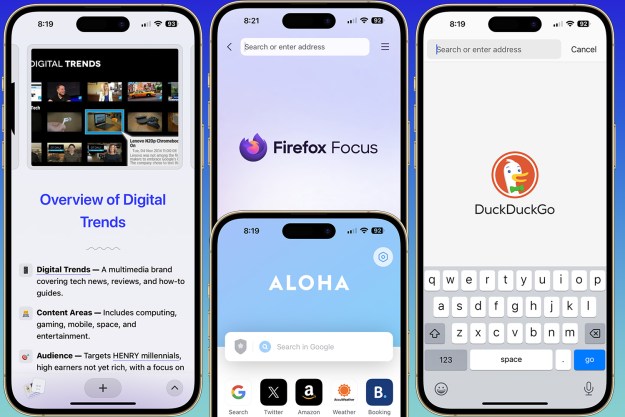
Q: What do you get when you cross Instagram and Quora?
A: Pupil.
Capitalizing on two of the Internet’s hottest trends – photo feeds and crowd-sourced Q&A – the Pupil app bring users real-time answers from real people. Just take a picture of something, and submit it to users for help identifying, or supplying more information about the image. Despite Pupil’s novelty element, founder and developer Mark Daiss insists the idea for the app was born naturally. Curious about a type of car he saw one day, Daiss says he “realized there is literally no service that can provide me with that information [via an image].”
And he’s right: We’re so reliant on our phones to provide us answers on the go, and that generally requires at least some background information. But Pupil wants to make it easier, and with nothing more than a photo and a question, you’re on your way to crowd-sourced answers.

Of course, there are bound to be some obstacles when you trust the general public. Finding “experts” for Pupil’s fields is “no easy feat,” Daiss says, noting that the broad range of subjects Pupil covers makes it that much more challenging. He initially worried about how Pupil would route question, and whether “the right people would be getting the rights answers.”
Fortunately, getting answers hasn’t been a problem. The app depends on its community to willingly answer questions, and there’s always a strong possibility that when it comes to volunteering information, people will bail. But so far while still in its early public beta stage, Pupil is going strong and has a 4:1 answer to question ratio – and the answers are good, which has been the truly exciting part for the team. “It’s working really well so far,” Diass says. “It’s a small community right now but it we continue to give good answers it will grow.” He emphasizes that marketing isn’t a concern quite yet, saying they want to refine the product first.
Daiss admits when the team first began developing Pupil, they toyed with the idea of narrowing its scope – making the app specifically tailored to answering image questions about just cars, or just plants. Deciding to stick with a variety of categories is an ambitious undertaking, and one that Daiss believes will help Pupil determine what subjects its users are most curious about. So far, he says the most common queries involve nature, people, and animals. Mind you, this is after roughly one week of public beta testing. But Pupil is undeterred: “Look at Quora,” Daiss says. “[It’s] a great resource for tech. Outside of that realm, it’s a little unstable and there’s not as much great feedback.” He wants to apply this principle to Pupil, potentially letting it evolve into a more niche Q&A platform with high-quality expertise behind it.
And that includes a transition to your PC. Daiss says that while Pupil is currently available for iOS and Android devices only, they are working on a web platform for asking and answering questions. It would also allow users to offer more thorough, long-winded answers – soapbox style, even.
It’s still a little early to determine where exactly Pupil is going, but Daiss did reveal that upgrades will include some sort of news feed with trending questions and most recent queries and answers, as well as improvements to the community aspect. Users will get “Pupil Points” and “Grades” for their answers, which will be viewable on a leader board, providing some incentive not only to respond to questions, but to provide insightful information. You could also see other users with similar expertise. A future version will also include samples and ideas on how to answer questions, ensuring that the community continues to base itself on worthwhile information. Even more ambitious, Pupil wants to create a functionality that will help the blind identify everything from food to street signs with the use of VoiceOver technology and a few other tweaks.
Pupil’s success is dependent on how much it can motivate a community, and with a smartphone in nearly every pocket and an ever-changing landscape, its creators may have found an unfilled niche.
Editors' Recommendations
- How to find your lost phone (tips for iPhone and Android)
- Best iPhone 15 deals: How to get Apple’s latest iPhone for free
- Everything you need to know about the massive Apple App Store outage
- This flash sale gets you a refurbished iPhone from just $126
- How to use photo cutout to cut and paste images in iOS 17


